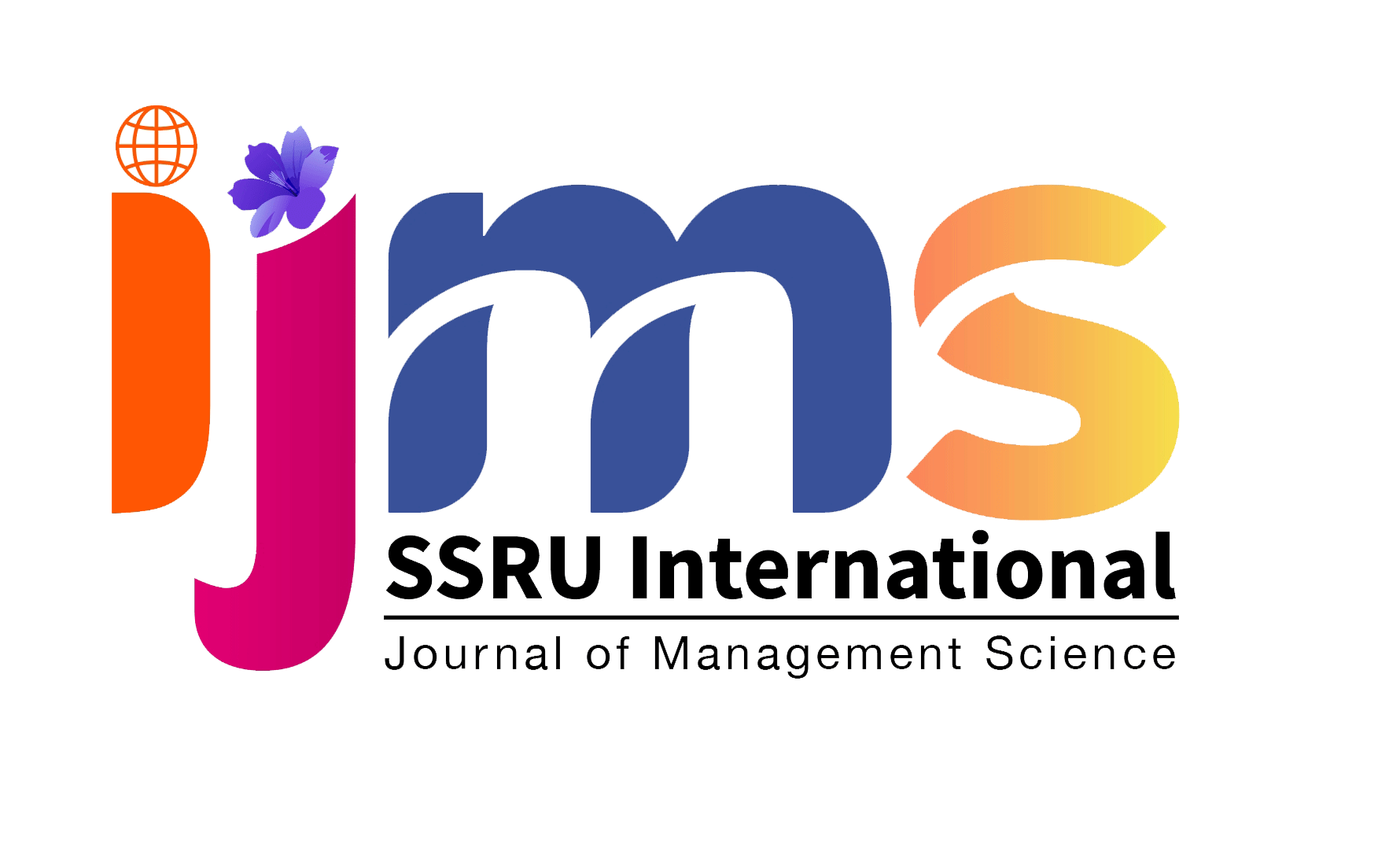The Relationship of Total Quality Management (TQM) Practices on Promoting Innovation Development in The Food Industry
Main Article Content
Abstract
The research entitled “The Relationship of Total Quality Management (TQM) Practices on Promoting Innovation Development in The Food Industry” has objective to study the relationship of employees’ communication practices on promoting innovation development in the food industry; to study the relationship of leadership practices on promoting innovation development in the food industry; and to study the relationship of training practices on promoting innovation development in the food industry. This research was the quantitative research by using the close- ended questionnaire set to be an instrument. The simple random sampling technique was applied for 204 samples, who have experience in food industry in India. The statistics used for the study was composed of the descriptive statistics in terms of frequency, percentage, mean, and standard deviation; and the inferential statistics was the multiple regression analysis. The results found that the relationship of employees’ communication practices on promoting innovation development in the food industry has a value of 0. 266 in the aspects of manager communication and subordinate communication;
except, peer communication. The relationship of leadership practices on promoting innovation development in the food industry has a value of 0. 408 in the aspects of behavioral theory and transformational theory; except, trait theory. The relationship of training practices on promoting innovation development in the food industry has a value of 0. 316 in the aspect of on-the-job training; except, online training and job rotation.
Article Details

This work is licensed under a Creative Commons Attribution-NonCommercial-NoDerivatives 4.0 International License.
ข้อมูลลิขสิทธิ์
References
Abdul, N., Al-Saffar, G., & Obeidat, A. (2019). The effect of total quality management
practices on employee performance: The moderating role of knowledge sharing.
Marketing Letters.
Aquilani, B., Silvestri, C., Ruggieri, A. & Gatti, C. (2017). A systematic literature review on
total quality management critical success factors and the identification of new
avenues of research. TQM Journal. 29(1), 184-213.
Bass, B.M. (1985). Leadership and performance beyond expectations. New York: Free Press.
Bon, A.T. and Mustafa, E.M.A (2014). Impact of Total Quality Management-Based People
Management Practices on Administrative Innovation In Service Smes. Middle-East
Journal of Scientific Research. 19(9), 1162-1168.
Cheng, C. C. J., & Chen, J. (2013). Breakthrough innovation: The roles of dynamic
innovation capabilities and open innovation activities. Journal of Business &
Industrial Marketing. 28(5), 444-454.
Diab, S. M., & Ajlouni, M. T. (2015). The influence of training on employee’s performance,
organizational commitment, and quality of medical services at Jordanian private
hospitals. International Journal of Business and Management. 10(2), 117-127.
Einsenberg, E. M., & Goodall, H. L., Jr. (1993). Organizational communication: Balancing
creativity and constraint. New York, NY: St. Martin’s Press.
FICCI (2010) Survey on challenges in food processing sector. Mumbai, India.
Retrieved from https://ficci.in/sector-Surveys.asp?sectorid=15#SectorSurveys
Goldstein, I., & Ford, J.K. (2002). Training in organizations (4th Ed). Belmont, CA:
Wadsworth.
Hair, J.F., Black, W.C., Babin, B.J. and Anderson, R.E. (2010). Multivariate Data Analysis.
th Edition, Pearson, New York
Hoang, Dinh Thai; Igel, Barbara; Laosirihongthong, Tritos. (2006). International Journal of
Quality & Reliability Management. 23(9), 1092-1117.
Jamieson, M. V., Shaw, J. M. (2016). Pre and Post Course student’s self-assessment of
CEAB graduate attributes - a tool for outcomes assessment, student skill and Course
improvement. Canadian Engineering Education Association (CEEA16), Conference
Paper 37, Dalhousie University.
Joshi, A. A. (2018). Impacts of Leadership on TQM in Food Industry in India. Masters’
thesis & specialist projects. Paper 2072. Western Kentucky University, USA.
Kumar, V., Sharma, R. R. K., Verma, P., Lai, K. K. & Chang, Y. H. (2018). Mapping the
TQM implementation: an empirical investigation of the cultural dimensions with
different strategic orientation in Indian firms. Benchmarking: An International
Journal. 25(8), 3081-3116.
Lavelle, J. J., Rupp, D. E., Manegold, J., & Thornton, M. A. (2015). Multifoci justice &target
similarity: Emerging research & extensions. The Oxford handbook of justice in work
organizations, 165-186.
Perry, S. J., & Mannucci, P. V. (2017). From creativity to innovation: The social network
drivers of the four phases of the idea journey. The Academy of Management Review.
-79.
Prajogo, D. I. (2015). The strategic fit between innovation strategies & business environment
in delivering business performance. International Journal of Production Economics,
–9.
Sijbom, R. B., Janssen, O., & Van Yperen, N. W. (2015). How to get radical creative ideas
into a leader’s mind? Leader’s achievement goals & subordinates’ voice of creative
ideas. Eur. Rev. Soc. Psychol. 24, 279–296.
Talapatra, S., Uddin, M.K., Antony, J., Gupta, S. & Cudney, E.A. (2019). An empirical study
to investigate the effects of critical factors on TQM implementation in the garment
industry in Bangladesh. International Journal of Quality and Reliability Management,
Vol. ahead-of-print No. ahead-of-print.
Tuckey, M. R., Li, Y., & Chen, P. Y. (2017). The role of transformational leadership in
workplace bullying: Interactions with leaders’ and followers’ job characteristics in a
multi-level study. Journal of Organizational Effectiveness: People and Performance,
(3), 199-217.
Yamane, T. (1967). Statistics: An introductory analysis. New York: Harper & Row.
Zhang, Y., Zhang, J., Forest, J., & Chen, C. (2018). The negative & positive aspects of
employees’ innovative behavior: role of goals of employees & supervisors. Front.
Psychol. 9:1871.


